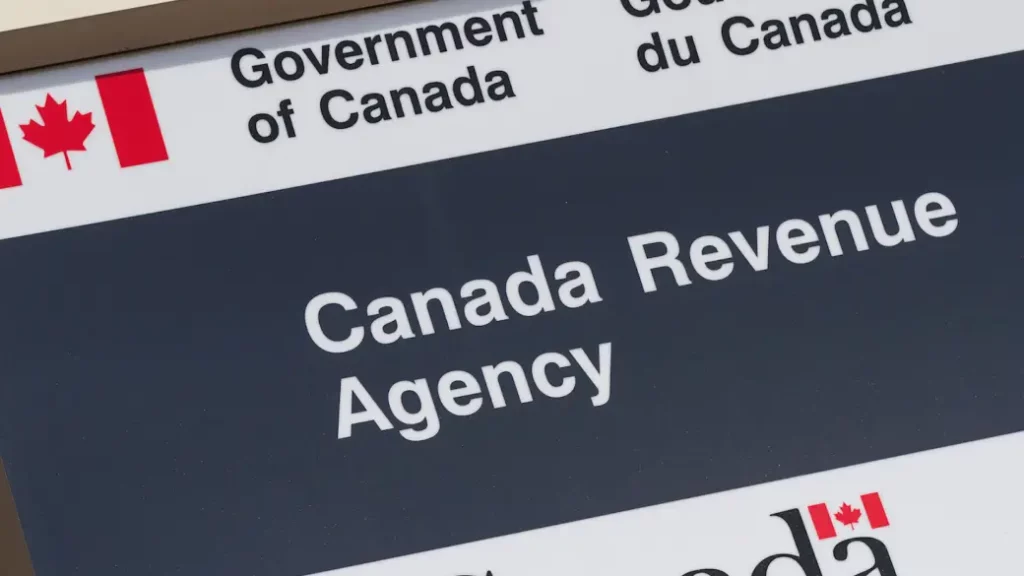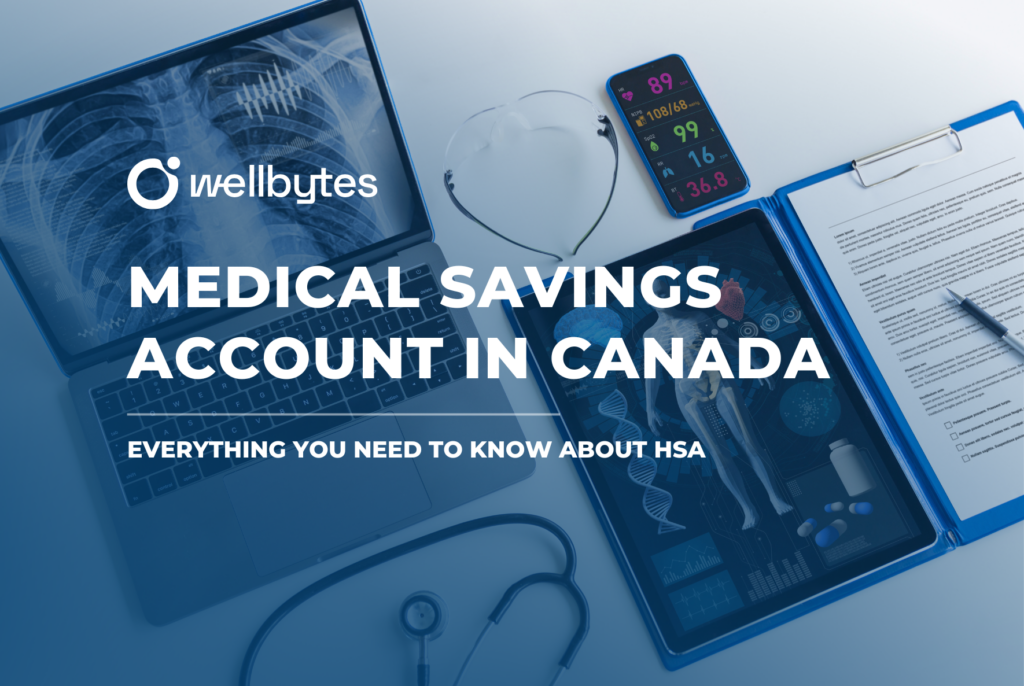A CRA compliant HSA (Health Spending Account) is an essential component for many Canadian employers and self-employed professionals seeking tax-efficient ways to manage medical expenses. With the proper structure, you can reap significant tax benefits while providing valuable health benefits to your employees or yourself.
However, the importance of adhering strictly to CRA guidelines cannot be overstated. Non-compliance can lead to penalties, invalidation of the tax advantages, and unwanted audits.
This comprehensive guide is designed to walk you through every critical step involved in establishing a CRA-compliant HSA—from foundational definitions to practical setup tips and compliance pitfalls to avoid. By the end, you will have a clear, actionable checklist to ensure your health benefit plan meets all official standards and maximizes its advantages.
Why compliance with CRA matters for your HSA

In today’s competitive business environment, offering health benefits isn’t just a perk—it’s a strategic move to attract and retain top talent, reduce employee health-related absences, and improve overall wellbeing.
However, in Canada, all health spending plans must comply with the Canada Revenue Agency (CRA) regulations to qualify for the desired tax benefits. Failing to meet these standards can jeopardize your plan’s tax-advantaged status, potentially leading to added personal or corporate tax liabilities.
Compliance with CRA regulations isn’t just bureaucratic red tape; it’s a safeguard ensuring that your HSA remains within the legal and tax frameworks established by Canadian authorities. It provides peace of mind that your health benefits are structured properly and are shielded from future audits or disallowances.
What is a CRA-compliant HSA, and who needs to care?

A CRA-compliant HSA is a health spending account that adheres strictly to the guidelines outlined by the Canada Revenue Agency. These guidelines specify the procedures for operation, documentation, and administration of the plan, including eligibility, expense documentation, and contribution limits.
Non-compliant HSAs might be considered taxable benefits, which nullifies the tax advantages—ultimately making them less effective and more costly.
Employers, self-employed professionals, and small business owners who want to utilize tax advantages while providing healthcare benefits need to care about compliance.
Without it, any tax deductions could be denied, and the benefits could be classified as taxable income, undermining the original intent of the plan.
Promise of value: You’ll leave with a clear checklist and structure guide
This article promises you will walk away with a thorough understanding of what it takes to create and manage a CRA-compliant HSA. You’ll receive a detailed checklist that breaks down the key requirements and best practices, along with strategic guidance on setting up an eligible plan.
Whether you’re an employer looking to supplement employee benefits or a sole proprietor aiming to optimize your health expenses, this guide offers clarity, actionable steps, and insights to ensure your HSA aligns with CRA standards.
What is a CRA-Compliant HSA?
Definition of “CRA-compliant” in the context of Health Spending Accounts
In the Canadian regulatory landscape, a CRA-compliant Health Spending Account refers to a plan that is structured and administered according to the specific rules set out by the Canada Revenue Agency.
These rules are designed to define what qualifies as a legitimate benefit that can be reimbursed on a tax-free basis, ensuring the plan doesn’t inadvertently become a taxable benefit or violate employment and tax laws.
Key to understanding this compliance is recognizing that the plan must be an “approved” benefit under Canadian tax legislation, particularly focusing on the plan’s setup, documentation, approval process, and administration.
Who defines the rules: CRA guidelines and income tax bulletin IT-339R2
The primary authority for these rules is the Canada Revenue Agency, whose guidelines are periodically published and updated. The critical reference document is Income Tax Bulletin IT-339R2, which explicitly outlines the conditions under which health benefit plans like HSAs qualify for tax-exempt treatment.
These guidelines specify criteria such as how the plan must be structured, who is eligible, what expenses qualify, and how to document reimbursements properly. They serve as an authoritative blueprint for ensuring your HSA is not only effective but also legally compliant.
Misconceptions to avoid (e.g., it’s not just a reimbursement account)
A common misconception is that an HSA is simply a reimbursement account where employees can submit expenses for reimbursement, without strict oversight or formal structure. While reimbursements are a core component, a CRA-compliant HSA is distinctly different because it requires a formal written plan, specific rules on contributions and claims, and third-party administration to meet legal standards.
Another misconception is thinking that provisions such as flexible contribution limits or cash conversions will maintain compliance. On the contrary, CRA guidelines enforce predefined limits and restrict direct cash-outs, emphasizing structured plans with clear boundaries.
Core Requirements for CRA-Compliant HSA

Use of a third-party administrator
A vital element for maintaining CRA compliance is engaging a third-party administrator (TPA). The role of the TPA is to manage the plan independently, verify receipts, and process claims objectively. This safeguards the plan from being classified as an “employer benefit” that could be interpreted as a personal advantage—a critical concern under CRA regulations.
Third-party administration imposes necessary formalities, providing independent oversight that ensures the plan operates transparently and in accordance with legal requirements. It also helps in maintaining audit-ready documentation, which is crucial if CRA ever questions the plan’s compliance.
Pre-set annual limits
A CRA-compliant HSA must have fixed contribution and reimbursement limits established before the start of each benefit year. These limits are based on role, employment status, and recognized thresholds, and they must be non-negotiable to ensure that the plan does not become overly flexible or open to abuse.
Pre-setting limits prevents the plan from turning into a flexible, cash-like benefit, which could be considered non-compliant, or from offering unlimited coverage, which can trigger adverse tax consequences.
Must be employee-only benefit (even for sole shareholders, structure matters)
One of the critical criteria outlined in CRA guidelines is that the benefit must be exclusively for employees or recognized groups, not for the owner or self-employed individuals lacking employment status. For incorporated professionals like doctors or consultants, the structure of the corporation and employment contract is essential.
This criterion ensures the benefit remains an employment-related expense rather than a personal or shareholder advantage. Proper structuring and legal documentation are necessary to establish this clear delineation.
Written plan documentation
Having a formal, documented health plan is non-negotiable. The documentation should include:
- Plan objectives and scope
- Eligibility criteria
- Contribution and reimbursement procedures
- Administrative processes and oversight
- Record-keeping protocols
This written plan provides transparency and compliance assurance, acting as evidence in case of CRA audits and helping avoid documentation-related pitfalls that could cause disqualification.
Receipts must be retained and matched to expenses
Proper documentation—including receipts, invoices, or proof of purchase—is mandatory for every claim. These should be stored securely and matched explicitly to the expenses submitted for reimbursement. The CRA can audit these records to verify legitimacy.
Maintaining comprehensive records upholds the integrity of the plan, ensures transparency, and facilitates smooth audits. It also discourages fraudulent claims and helps demonstrate that expenses are legitimate medical costs.
Benefits must not be “flexible” or cash-convertible
A CRA-compliant HSA cannot allow participants to convert unused benefits into cash or modify benefit amounts dynamically. Benefits should strictly adhere to predefined limits, with no cash-out options or flexibility in coverage beyond set parameters.
This restriction guarantees that the plan remains an employer-controlled benefit, not an informal or disguised payment, thus avoiding tax complications or disqualification risks.
Structure Guidelines: Eligible Plan Setup

For incorporated professionals (doctors, consultants, etc.)
Incorporated professionals typically operate through a corporation, which offers unique advantages and challenges when setting up an HSA. To ensure compliance, the plan must be structured so that the corporation and the individual employee/shareholder are clearly distinguished.
The benefit should be embedded within the framework of the employment agreement, with appropriate documentation indicating that the HSA is part of a formal compensation package. The plan’s administration must be handled independently—preferably via a third-party provider—and contributions should be pre-determined.
It’s also essential to ensure that the plan’s reimbursements are for legitimate medical expenses and that receipts are retained thoroughly. Incorporation structures vary, so professional legal and tax advice is recommended to avoid pitfalls such as personal benefit classifications or accidental non-compliance.
For small businesses with multiple employees
For small businesses employing more than one staff member, establishing a formal, company-wide HSA benefits program is advantageous. The setup should mirror a standard employee benefits plan, with written policies, contribution limits, and independent administration.
It’s crucial to treat all employees equitably and avoid favoritism or informal arrangements, as these can lead to compliance issues. Smaller companies should consider utilizing third-party plan administrators that specialize in CRA-compliant HSAs to streamline compliance.
The plan should be integrated into the overall benefits package and documented formally, including employee eligibility, benefit limits, and procedures for claims and reimbursements. This formal approach ensures adherence to CRA standards and provides clarity for all stakeholders.
Importance of having a formal written plan
Whether for sole practitioners or larger teams, a well-crafted, formal written plan is the backbone of CRA compliance. It acts as a blueprint for all actions, clearly defining rules, eligibilities, procedures, and limitations.
In case of audit or inquiry, this documentation demonstrates the plan’s legitimacy and adherence to regulations. It also ensures that everyone involved understands the scope and limitations, reducing accidental breaches and enhancing employee or self-employed confidence.
Avoid red flags (e.g., informal, backdated reimbursement setups)
Compliance failures often stem from informal arrangements or practices. Common pitfalls include backdating reimbursements, offering flexible or unrestrained benefits, or using the HSA as a personal or shareholder advantage.
Red flags such as these increase the risk of disqualification, audits, and penalties. Vigilance and rigorous documentation are key to avoiding these traps. Participation in formal planning, proper timing of reimbursements, and independent administration all contribute to building a compliant, sustainable plan.
HSA Compliance Checklist (Table Format)
Creating a compliance checklist helps streamline the setup and ongoing maintenance of a CRA-compliant HSA. Here’s a summary in format for quick reference:
| Criteria | Required? | Notes |
| Pre-determined annual limits | ✅ | Based on role, employment status, and CRA guidelines. Needs to be fixed and non-negotiable. |
| Third-party plan administrator | ✅ | Ensures independent oversight to avoid “personal benefit” classification. |
| Medical receipts stored properly | ✅ | Receipts must be retained, matched, and auditable. |
| Employee-only benefit | ✅ | Is not applicable to self-employed without proper corporate structure. |
| Board-approved documentation | ✅ | Documented annually and maintained as official record. |
Consistency with this checklist ensures ongoing adherence and minimizes compliance gaps. Regular review and updates, guided by legal advice, are recommended to maintain standards.
Common Compliance Mistakes to Avoid

Self-administering your own HSA without documentation
Handling an HSA without formal documentation or proper administration risks making the plan non-compliant. Self-administration usually leads to inconsistent record-keeping, potential overstating of benefits, or unverified reimbursements. Always engage a third-party administrator and maintain clear records to avoid invalidating your plan.
Providing HSA to unincorporated owners without employment contract
Offering health accounts to an unincorporated owner or self-employed individual without a formal employment structure or valid contract can cause the CRA to classify the plan as a personal benefit, making reimbursements taxable.
Ensure that any such benefit is properly documented, and the employment relationship is formal and compliant with employment standards.
Using HSA as “slush fund” without limits or oversight
Attempting to provide unlimited reimbursements or flexible benefits outside predefined limits is a common mistake. Such practices are not compliant and can trigger audits, penalties, or disqualification.
Stick to fixed, pre-established limits and documented procedures. Oversight by independent administrators helps maintain the integrity of the plan.
Benefits of a CRA-Compliant HSA

Tax advantages for corporations and employees
One of the most compelling reasons to establish a CRA-compliant HSA is the significant tax benefit it provides. Contributions made by corporations are tax-deductible, reducing the company’s taxable income. Reimbursements for eligible medical expenses are non-taxable to employees, providing a tax-free benefit that enhances overall compensation packages.
Predictability and budget control
Having a formal, structured plan with fixed limits allows for predictable expenses and budgeting. Employers can plan healthcare outlays annually, avoiding unexpected costs or compliance risks associated with informal or flexible arrangements.
Attracting and retaining talent
Offering compliant health benefits demonstrates a company’s commitment to employee wellbeing, which enhances morale and loyalty. It can serve as a powerful part of your compensation strategy and differentiate your organization in competitive markets.
Flexibility and employee satisfaction
A well-managed HSA adapts to diverse employee needs, allowing for tailored reimbursements within the bounds of the plan. Employees appreciate clarity and certainty about their benefits, fostering satisfaction and trust.
How Wellbytes Ensures CRA Compliance

Licensed third-party administration
Wellbytes specializes in administering CRA-compliant HSAs. Our license and expertise ensure your plan respects all regulations, with detailed oversight and seamless processing.
Pre-approved plan templates
We offer clients a selection of compliant plan templates that meet all CRA standards. Customizable to your needs, these templates provide a quick start with confidence that compliance is built-in.
Audit-ready documentation and support
Our team prepares comprehensive documentation, maintains records, and provides ongoing support. Should the CRA review your plan, you’ll have all necessary records and reports in order.
Regular compliance checks and updates
Law and regulations evolve; we monitor developments continuously, updating your plan as needed. This proactive approach reduces compliance risks and guarantees your HSA remains valid.
Conclusion
Establishing a CRA-compliant HSA is not just a good idea—it’s a strategic necessity for any Canadian business or professional seeking tax-efficient health benefits. By rigorously adhering to the core requirements, maintaining proper documentation, and working with qualified third-party administrators like Wellbytes, you can optimize your health benefits plan for legality, performance, and tax advantages.
Taking the time to understand and implement compliance measures ensures that you maximize your benefits while avoiding costly mistakes. To start your journey toward a compliant and effective HSA, consider booking a free consultation with Wellbytes or downloading our comprehensive compliance checklist—your gateway to smarter, compliant health benefits management.
Conclusion
A CRA-compliant HSA in Canada is a powerful tool for delivering tax-efficient health benefits that align with regulatory guidelines, providing value to both employers and employees. Achieving compliance requires meticulous plan design, formal documentation, independent administration, and adherence to fixed contribution limits and expense procedures.
By understanding and implementing these core principles—guided by authoritative CRA guidelines and supported by expert third-party administrators—you can ensure your Health Spending Account remains compliant, audit-ready, and maximally beneficial.
Taking proactive steps now secures your benefits plan’s long-term viability, maximizes tax advantages, and fosters a culture of transparent, compliant employee benefits. Engage with professionals like Wellbytes to streamline this process and build a benefits program that not only meets but exceeds compliance standards, paving the way for sustainable, tax-efficient health benefits in your organization.
